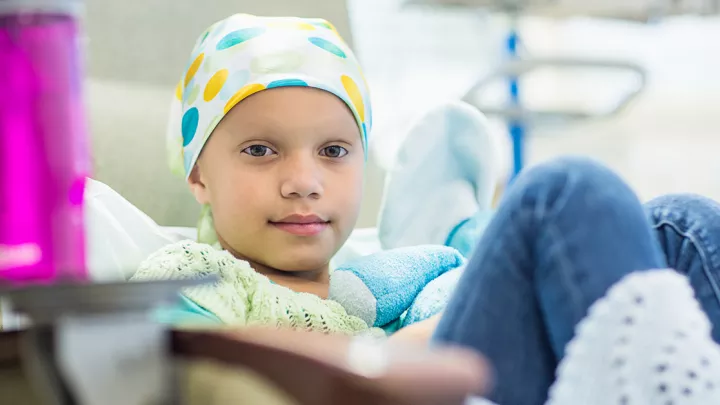
Side Effects of Leukemia Treatment More Prevalent in Girls
Sex-based differences in incidence and long-term outcomes have been well documented in pediatric cancer patients. Investigators at Children’s Hospital Los Angeles have now discovered similar differences in acute side effects due to treatment in pediatric patients with acute lymphoblastic leukemia (ALL), a cancer of the blood and bone marrow. In a study available now in Pediatric Blood & Cancer, CHLA researchers report female pediatric patients suffering from ALL are more likely to experience treatment-related toxicities and death, suggesting sex should be accounted for when administering treatment.
“This helps us gain a better understanding of the profile of side effects that occur among cancer patients. We now know females are at more risk,” says David Freyer, DO, MS, director of the Survivorship and Supportive Care Program at CHLA and author on the study.
Over 6000 new cases of ALL are reported annually, with roughly 60 percent occurring in children. In patients with ALL, the bone marrow produces many immature, non-functional white blood cells. These cells can quickly spread through the blood and into other areas of the body, such as the lymph nodes and nervous system.
Researchers found that among high risk ALL patients, female patients had significantly more hospital days, delays in therapy and treatment-related infections. They also experienced significantly more toxicity of the nervous system, pancreas and gastrointestinal tract. Young female patients were more likely to die as a result of treatment-related causes, with 2.6 percent of girls dying within five months of beginning treatment compared to 1.2 percent of boys. Similar disparities also existed for standard risk patients, with girls experiencing both more pain and metabolic toxicities.
It remains unclear exactly why young female patients experience greater side effects and treatment-related deaths than male patients. Possible explanations could include hormone differences, especially for adolescent patients.
“It’s kind of an open question now. This is hypothesis-generating research. We’ve found something to be true, and now we need to find a way to explain it,” says Freyer.
This study was supported in part by funding from the National Cancer Institute of the National Institutes of Health (#U10CA098453).

